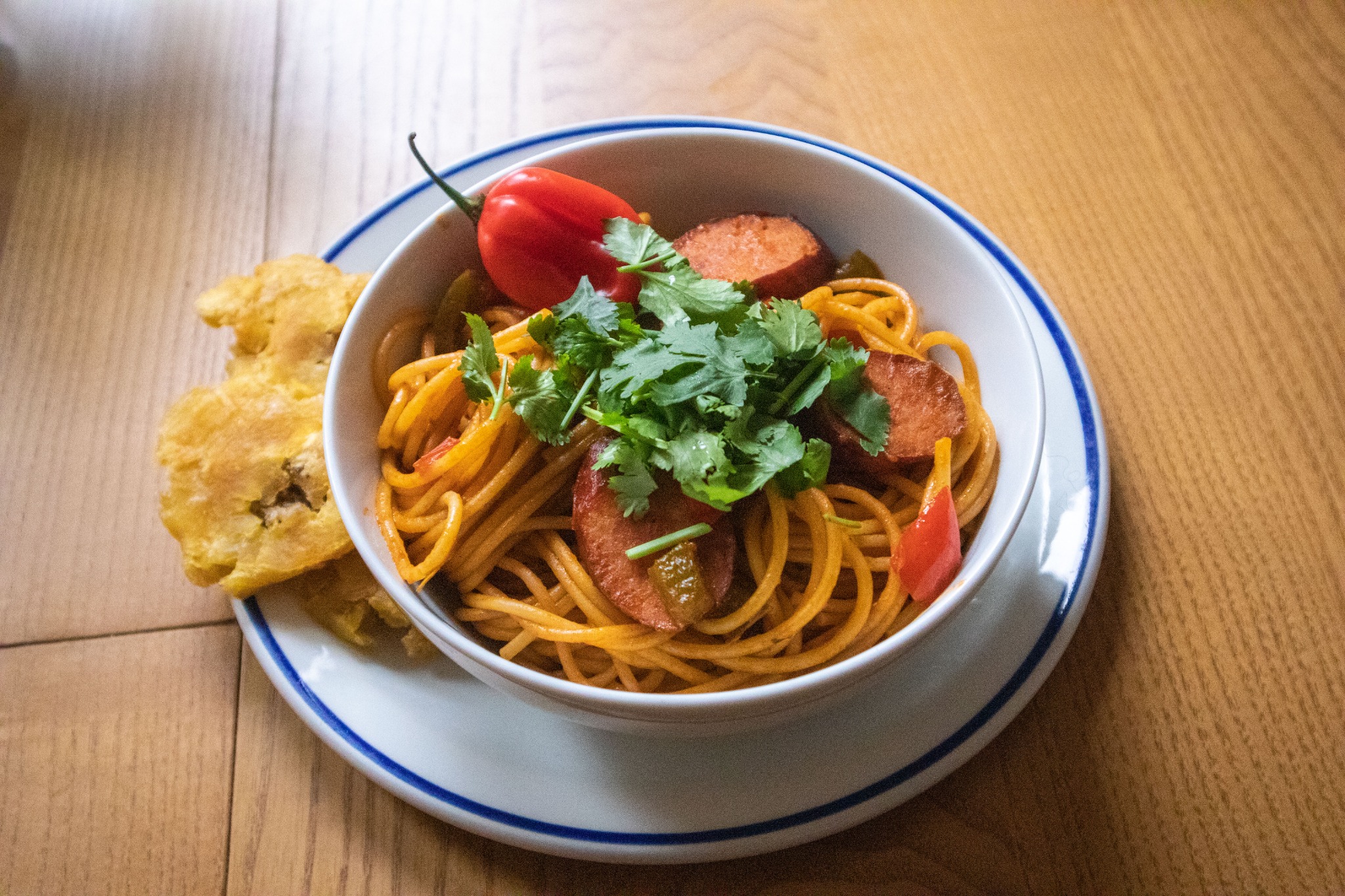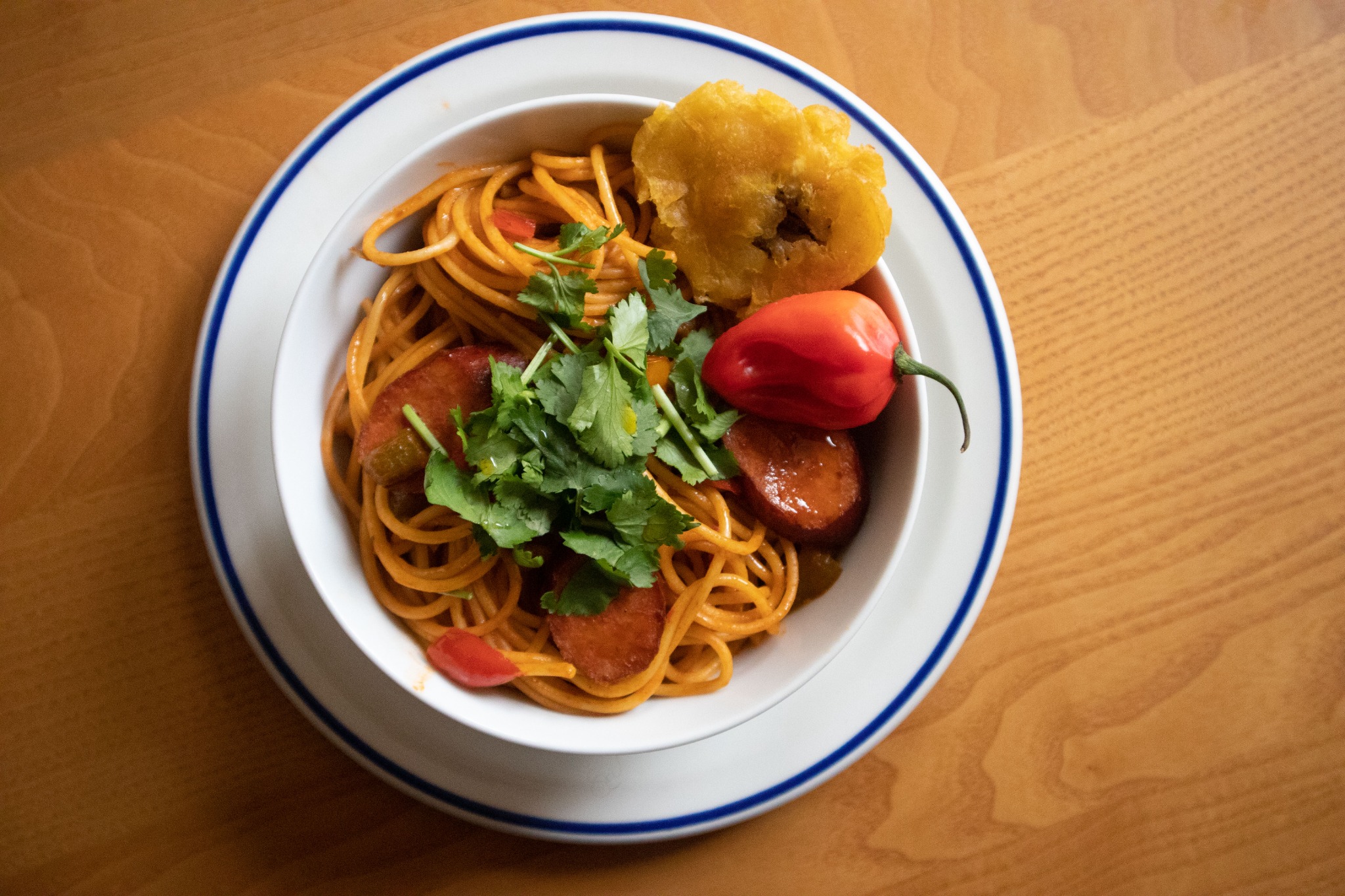CULTURAL FRITTATA | Spaghetti for Breakfast
It’s 5.30 pm, a very British dinnertime at Acton’s Grill Shack & Tiki Bar, the joyful Caribbean restaurant that has made North London its home since 2020. After a parade of delicious dishes prepared by chef Guilaine Brutus, I ask Grill Shack’s owner Wilford Marous for a recommendation on the rum. “This is the best one,” he says, pointing to the Barbancourt: “After all, it’s made in Haiti, my country.” I take the opportunity to introduce myself and Wilford remembers me immediately. “Of course! You sent me an email. The Italian girl that wants to write an article about Haitian Spaghetti!”
Yes, Haitian Spaghetti. A dish I encountered in one of my many food-geek explorations. This spaghetti, or “Spaghetti Haiti,” as they call it on the Caribbean island, dates back to 1915 when American soldiers occupied the country and introduced the pasta noodle. Wholesome, simple and cheap to prepare, spaghetti became an island classic with its own local touch. In the most common version of the recipe, you will find a seasoning base of Haitian Epis – a staple of Haitian cuisine made by mixing herbs, vegetables and stock – tomato paste, bell peppers and sausage or smoked herring. But, as it often happens with recipes developed from home cooking traditions, there are numerous versions of the dish which change from family to family.
Spiced with a powerful history, my fascination with this spaghetti dish led me to Grill Shack & Tiki Bar, which opened at the beginning of the pandemic and is on its way to becoming an institution for London’s Haitian community. Wilford tells me that people from all over England come to eat in his restaurant, the only representative of Haitian cuisine in the United Kingdom. In the kitchen, there’s Guilaine, the founder of the Haitian Heritage Group, a community interest company with the goal of preserving and sharing Haitian culture in London. I visit them at their culinary consulate to discover more about this recipe.
A few weeks later I am speaking with Guilaine on the phone: “We don’t serve the spaghetti at the restaurant, but if you want to come by we can cook it for you!” she tells me. It wouldn’t be the first time they made an exception. Guilaine says that some months before, during London’s Fashion Week, a Haitian model called the restaurant. The chef remembered the conversation fondly. “She said, ‘I miss home and the smoked herring spaghetti, could you make them for me?” and with the effortless hospitality of someone who is welcoming by nature, they cooked her this special dish.
But, how did spaghetti arrive in Haiti? This recipe is not the result of one of the many migrations that happened on the island after the 1804 independence, on the contrary, as previously stated, from the hostile American occupation between 1915 and 1034. Carlos C. Olaechea, an American food expert, explains how the American military settlement influenced the culinary practices of the country. They introduced processed food such as hotdogs and Spam; spaghetti – originally introduced in the US by Italian migrants – and ketchup.
Soon, spaghetti became one of the most beloved breakfast options for Haitians, alongside omelette and Mayi Moulen: cornmeal porridge usually paired with fish and avocado. When I ask Guilaine if spaghetti is consumed every day, she explains to me that home-cooked breakfasts are variable. However, it is common in Haiti to find trucks that sell spaghetti on the streets, usually served with a boiled egg, avocado and bread or tostones – fried green plantain fritters.
SPAGHETTI HAITI
- 250g di spaghetti
- 1 sausage (kielbasa or hotdog)
- 1/2 onion
- 1 diced green pepper
- 1 diced red pepper
- 1 chicken stock cube
- 1 tbsp of tomato paste
- 1 tbsp of epis (1 green pepper, 1 red pepper, 2 onions, 1/2 parsley, 1/2 fresh cilantro, 4 shallots, 1 garlic head, 2 chicken stock cubes, 1 scotch bonnet, 2 extra virgin olive oil, 150 mL of water, 1 lemon juice - all blended in the mixer)
- Heat up the pan with some oil, add the epis, and fry it for a minute.
- In the meantime boil some water and salt it. Cook pasta following the directions on the package.
- Add the diced onion and shallots to the pan and let them soften for a few minutes, then ass the diced sausage. Cook the sausage until it darkens.
- Add the tomato paste and the stock cube and leave cooking for around seven minutes, until the two ingredients are combined with the rest and the peppers are softer but still crunchy.
- As soon as the pasta is cooked (al dente!), add to the sauce with a splash of pasta water. Keep simmering until the sauce gets thick and…here you go, the dish is ready!
This article is translated by the author from the Italian version of Cultural Frittata in RatPark Magazine.


0 Comments Add a Comment?